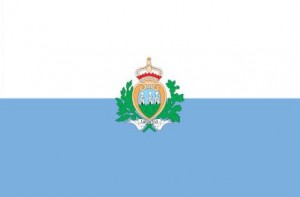 San Marino, officially the Republic of San Marino (also known as the Most Serene Republic of San Marino), is a microstate situated within the state of Italy. About one third times the size of Washington, DC, San Marino has a total area of only 24 square miles. It’s the world’s smallest republic and the world’s 227th state by land mass. By population, San Marino is the 214th most populated nation in the world, with 32,448 inhabitants. The country’s largest city is Dogana, while the Republic’s capital is the City of San Marino.
San Marino, officially the Republic of San Marino (also known as the Most Serene Republic of San Marino), is a microstate situated within the state of Italy. About one third times the size of Washington, DC, San Marino has a total area of only 24 square miles. It’s the world’s smallest republic and the world’s 227th state by land mass. By population, San Marino is the 214th most populated nation in the world, with 32,448 inhabitants. The country’s largest city is Dogana, while the Republic’s capital is the City of San Marino.
Basic History of San Marino
Claimed to be the oldest surviving sovereign state and constitutional republic in the world, San Marino is the continuation of the monastic community founded in 301 by Saint Marinus of Arba. The community that was formed around his small church by the 5th century managed to maintain its independence because of its relatively inaccessible location, but it was only in 1631 when its status was recognized by the Papacy.
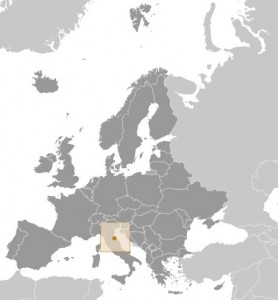 During the Italian unification process in the 19th century, San Marino served as a refuge for people persecuted because of their support for unification. In recognition of this support, Giuseppe Garibaldi accepted the wish of San Marino not to be incorporated into the newly-founded Italian state. San Marino remained neutral during World War I and was ruled by a fascist government from 1923 until 1943. It kept its neutrality during World War II as well, but was bombed by the Royal Air Force, who believed that San Marino had been occupied by German forces and was being used to store ammunition. The country was eventually occupied by Nazi Germany in September 1944, but its was liberated by the Allied forces after the four-day Battle of San Marino.
During the Italian unification process in the 19th century, San Marino served as a refuge for people persecuted because of their support for unification. In recognition of this support, Giuseppe Garibaldi accepted the wish of San Marino not to be incorporated into the newly-founded Italian state. San Marino remained neutral during World War I and was ruled by a fascist government from 1923 until 1943. It kept its neutrality during World War II as well, but was bombed by the Royal Air Force, who believed that San Marino had been occupied by German forces and was being used to store ammunition. The country was eventually occupied by Nazi Germany in September 1944, but its was liberated by the Allied forces after the four-day Battle of San Marino.
[wp_ad_camp_1]
San Marino had the world’s first democratically elected communist government after World War II, which held office between 1945 and 1957. Present day San Marino is a unitary parliamentary constitutional republic ruled by two Captains Regent which are elected every six months by the country’s Grand and General Council. The pair serves as head of state and government for a six-month term. Since 1243, the investiture of the Captains Regent takes place on 1 April and 1 October every year. San Marino became a member of the Council of Europe in 1988 and of the United Nations in 1992. Even though it is not a member of the European Union, San Marino uses the euro as its currency.
For the record, the government of San Marino made United States President Abraham Lincoln (1809-1865, in office from 1861 through 1865) an honorary citizen.
Geography of San Marino
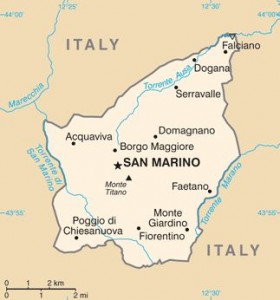 San Marino is an enclave in Italy, located on the north-eastern side of the Apennine Mountains, and has an area of only 24 square miles, making it world’s 227th largest state and the smallest republic on Earth. The Republic is divided into nine municipalities (castelli/castles) and 43 smaller administrative divisions which are called parishes. The country’s rugged terrain is dominated by the Apennine mountain range with the highest point, the summit of Monte Titano, being situated at 2,457 feet above sea level. The climate is naturally Mediterranean but tempered continentally since it is not coastal.
San Marino is an enclave in Italy, located on the north-eastern side of the Apennine Mountains, and has an area of only 24 square miles, making it world’s 227th largest state and the smallest republic on Earth. The Republic is divided into nine municipalities (castelli/castles) and 43 smaller administrative divisions which are called parishes. The country’s rugged terrain is dominated by the Apennine mountain range with the highest point, the summit of Monte Titano, being situated at 2,457 feet above sea level. The climate is naturally Mediterranean but tempered continentally since it is not coastal.
[wp_ad_camp_2]
Population of San Marino
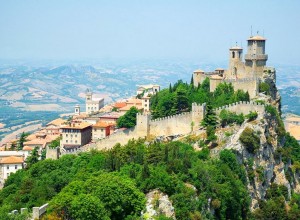 According to the CIA World Factbook, San Marino is home to 32,448 people in July 2013, which makes it the world’s 214th most populous country (out of 239 independent states and territories), while density is of 1,346 people per square mile. Almost 5,000 of the country’s population is made of foreign residents, most of whom are Italian citizens. Also, about 12,000 Sammarinese are known to live abroad most in countries such as Italy (5,700 people), the United States (3,000), France (1,900) and Argentina (1,600). As of 2013, the population growth rate in San Marino is of 0.93%, while life expectancy at birth of the total population is of 83.12 years – 80.59 years for males and 85.88 years for females. Birth rate is at 8.78 births/1,000 population, death rate is of 8.17 deaths/1,000 population, and sex ratio of the total population is 0.94 male(s)/female.
According to the CIA World Factbook, San Marino is home to 32,448 people in July 2013, which makes it the world’s 214th most populous country (out of 239 independent states and territories), while density is of 1,346 people per square mile. Almost 5,000 of the country’s population is made of foreign residents, most of whom are Italian citizens. Also, about 12,000 Sammarinese are known to live abroad most in countries such as Italy (5,700 people), the United States (3,000), France (1,900) and Argentina (1,600). As of 2013, the population growth rate in San Marino is of 0.93%, while life expectancy at birth of the total population is of 83.12 years – 80.59 years for males and 85.88 years for females. Birth rate is at 8.78 births/1,000 population, death rate is of 8.17 deaths/1,000 population, and sex ratio of the total population is 0.94 male(s)/female.
Largest city in San Marino
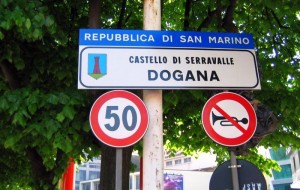 The largest city in San Marino is Dogana, a town located in the north-eastern extremity of San Marino in the Serravalle municipality. It has around 7,000 people, which means it is home to about 21 percent of the country’s total population. The Serravalle municipality is the largest “castle” in San Marino with almost 10,000 people. The Republic’s capital is the City of San Marino, which is the third largest city in the country, after Dogana and Borgo Maggiore (population 6,061). Situated on the western slopes of Monte Titano the City of San Marino has a population of 4,493 and a density of 1,641 square miles. Due to its attractive landmarks, the city is visited by more than three million people per year and has more than a thousand retail outlets.
The largest city in San Marino is Dogana, a town located in the north-eastern extremity of San Marino in the Serravalle municipality. It has around 7,000 people, which means it is home to about 21 percent of the country’s total population. The Serravalle municipality is the largest “castle” in San Marino with almost 10,000 people. The Republic’s capital is the City of San Marino, which is the third largest city in the country, after Dogana and Borgo Maggiore (population 6,061). Situated on the western slopes of Monte Titano the City of San Marino has a population of 4,493 and a density of 1,641 square miles. Due to its attractive landmarks, the city is visited by more than three million people per year and has more than a thousand retail outlets.
Ethnicity in San Marino
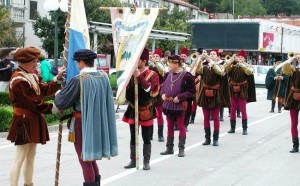 Sanimarinese is the dominant ethnic group in San Marino and accounts for almost 85 percent of the total population. The rest of the country’s population consists of foreign residents, most of whom are of Italian ethnicity (14 percent) and this leads to an unusually high net migration rate of almost nine migrants per 1,000 residents. San Marino ranks 11th in the world for net migration rate with Luxembourg closely following.
Sanimarinese is the dominant ethnic group in San Marino and accounts for almost 85 percent of the total population. The rest of the country’s population consists of foreign residents, most of whom are of Italian ethnicity (14 percent) and this leads to an unusually high net migration rate of almost nine migrants per 1,000 residents. San Marino ranks 11th in the world for net migration rate with Luxembourg closely following.
Religion in San Marino
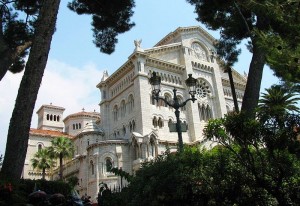 Although San Marino does not have an established official religion, the state is predominantly Catholic, with over 97 percent of the population following the Catholic faith. Other religions practiced in San Marino include Protestantism (1.1%), other Christians (0.7%), Judaism (0.1%), other (0.1%), while 0.7 percent claim to have no religion at all. According to the 20 Yearbook of Jehovah’s Witnesses, there are two congregations with 200 members worshiping in San Marino.
Although San Marino does not have an established official religion, the state is predominantly Catholic, with over 97 percent of the population following the Catholic faith. Other religions practiced in San Marino include Protestantism (1.1%), other Christians (0.7%), Judaism (0.1%), other (0.1%), while 0.7 percent claim to have no religion at all. According to the 20 Yearbook of Jehovah’s Witnesses, there are two congregations with 200 members worshiping in San Marino.
Language in San Marino
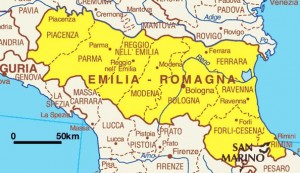 The primary and official language in San Marino not surprisingly is Italian. The Emiliano-Romagnolo language, albeit not official in the country, is also widely used. The Emiliano–Romagnolo language group is a genetic subgroup of the Gallo-Italic languages and it’s also spoken in the Emilia-Romagna region of Northern Italy between the Adriatic and the Apennines. The language is also referred to commonly as Emilian, Emiliano, or Sammarinese and is spoken by over 2,000,000 people in Italy and San Marino.
The primary and official language in San Marino not surprisingly is Italian. The Emiliano-Romagnolo language, albeit not official in the country, is also widely used. The Emiliano–Romagnolo language group is a genetic subgroup of the Gallo-Italic languages and it’s also spoken in the Emilia-Romagna region of Northern Italy between the Adriatic and the Apennines. The language is also referred to commonly as Emilian, Emiliano, or Sammarinese and is spoken by over 2,000,000 people in Italy and San Marino.
Economy of San Marino
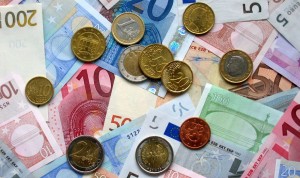 San Marino’s economy relies heavily on tourism, the banking industry and the manufacture and export of ceramics, clothing, furniture, and wine, with the manufacturing and financial sectors accounting for more than half of the country’s GDP. According to Wikipedia, San Marino is one of the wealthiest countries in the world in terms of GDP per capita ($55,449), comparable to countries such as Denmark or Germany. What’s more, San Marino is considered to have a highly stable economy, with one of the lowest unemployment rates in Europe, no national debt, and a budget surplus. In 2012, GDP by purchasing power parity was rated at $1.3 billion, while GDP by official exchange rate was of $1.8 billion.
San Marino’s economy relies heavily on tourism, the banking industry and the manufacture and export of ceramics, clothing, furniture, and wine, with the manufacturing and financial sectors accounting for more than half of the country’s GDP. According to Wikipedia, San Marino is one of the wealthiest countries in the world in terms of GDP per capita ($55,449), comparable to countries such as Denmark or Germany. What’s more, San Marino is considered to have a highly stable economy, with one of the lowest unemployment rates in Europe, no national debt, and a budget surplus. In 2012, GDP by purchasing power parity was rated at $1.3 billion, while GDP by official exchange rate was of $1.8 billion.
